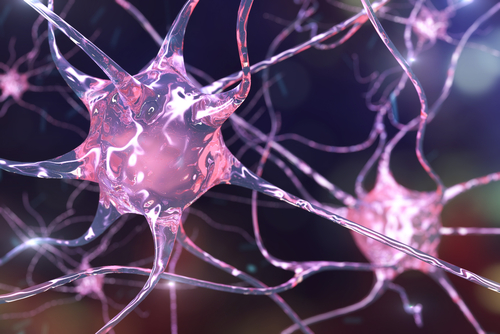Tiny Particles Prevent Neuronal Loss, Improve Motor Symptoms in Parkinson’s Mouse Study

Tiny crystals known as quantum dots can block the formation of Parkinson’s hallmark protein clumps, lowering nerve cell death and motor deficits, a mouse study has found.
The research, “Graphene quantum dots prevent α-synucleinopathy in Parkinson’s disease,” was published in Nature Nanotechnology.
Quantum dots are very small, engineered crystals with a diameter of as few as 10 to 100 atoms. They have electronic and fluorescent properties that have been used in research. The particles are found in some TV screens, LED lights and solar cells.
Because of their very small size, these particles, unlike most medicines, can bypass the blood-brain-barrier, a semipermeable membrane that protects the brain from outside circulation.
Parkinson’s patients typically have protein deposits in their nerve cells, called Lewy bodies. There are protein clumps composed mainly of misfolded alpha-synuclein protein that form long strands, or fibrils, and lead to the progressive loss of dopamine-producing neurons in an area of the brain called substantia nigra. This brain area is responsible for movement control, and its malfunction leads to Parkinson’s motor symptoms.
Despite increasing evidence implicating alpha-synuclein clumps in Parkinson’s development, anti-aggregation compounds have not been successful in clinical settings.
Researchers from Johns Hopkins Medicine, Baltimore, Maryland, and Seoul National University, South Korea, developed carbon-based, graphene quantum dots (GQDs) to evaluate if these tiny particles can inhibit the formation and break up existing alpha-synuclein fibrils in the brain.
In a laboratory dish, GQDs were able to stop the formation of new protein clumps and induce the disaggregation of mature fibrils.
Discuss the latest research in the Parkinson’s News Today forums!
Importantly, GQDs prevented neuronal death and loss of synapses (the junction between two nerve cells that allows them to communicate), reduced the formation of Lewy bodies, eased the dysfunction of mitochondria (cells’ energy power plants), and inhibited neuron-to-neuron transmission of alpha-synuclein fibrils.
The team then assessed whether treatment with GQDs would ease Parkinson’s-related symptoms in mice injected with fibrils. They observed that GQDs were able to pass through the blood-brain barrier, prevented the loss of dopamine neurons, and improved motor function.
Previous studies have discussed the potential use of GQDs to inhibit the formation of amyloid-beta fibrils in Alzheimer’s disease, which leads to the formation of senile plaques. “This might be a universal effect on any kind of fibrillation process related to disease,” Byung Hee Hong, PhD, one of the study’s authors, said in a NewScientist article.
“It is expected that GQD-based drugs with appropriate modifications might provide a clue to support the development of new therapeutic agents for abnormal protein aggregation- related neurological disorders including Parkinson’s,” researchers wrote.
However, Hong underscored the roadblocks still ahead before a GQD-based treatment may be available: “It’s hard to translate the results in mice to actual patients, whose systems are way more complicated. But we do believe quantum dots can make positive impacts to some extent,” he said.






